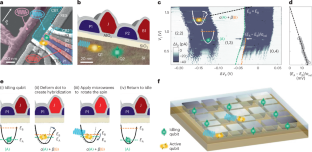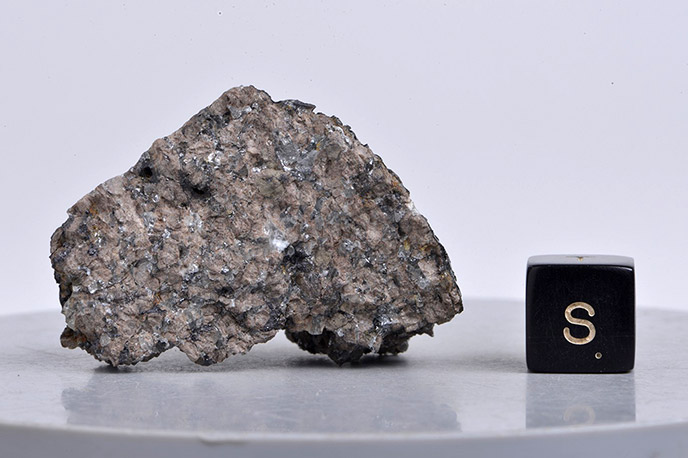UNSWシドニーの研究により、シリコン製の新しいタイプの量子ビット「フリップフロップ型量子ビット」が実証され、大規模量子コンピュータの構築が容易になることが明らかになりました。 UNSW Sydney research demonstrates a new type of quantum bit in silicon, called ‘flip-flop’ qubit, which can facilitate the construction of a large-scale quantum computer.
2023-02-13 ニューサウスウェールズ大学(UNSW)
◆モレロ教授のグループは、シリコンの中のリン原子1個の核スピンと同様に電子のスピンを使うことで、量子コンピュータ計算に使われる情報の単位である「量子ビット」として使えることを世界で初めて実証しています。どちらの量子ビットも単体では非常に優れた性能を発揮するが、その動作には振動する磁場が必要である、と彼は説明する。
◆数年前、モレロ教授のチームは、電子と原子核の上下の向きの組み合わせとして量子ビットを定義すれば、電場だけでそのような量子ビットを制御できることに気づきました。今日の結果は、この先見性のあるアイデアを実験的に実証したものです。
◆この新しい量子ビットは、同じ原子に属する2つのスピン(電子スピンと原子核スピン)からできていて、それらが常に反対方向を向いているという条件から、『フリップフロップ』と呼ばれています」と、『Science Advances』に掲載された論文の実験責任者の一人であるRostyslav Savytsky博士は語っています。
◆電子を原子核からずらすことによる「フリップフロップ」量子ビットの電気的制御は、非常に重要な副次的効果を伴います。負の電荷(電子)が正の電荷(原子核)から遠ざかると、電気双極子が形成される。2つ以上の電気双極子を近接させると、それらの間に強い電気的結合が生じ、有用な量子計算に必要な多量子ビットの量子論理演算を仲介することができる。
<関連情報>
- https://newsroom.unsw.edu.au/news/science-tech/flip-flop-qubit-realisation-new-quantum-bit-silicon-controlled-electric-signals
- https://www.science.org/doi/10.1126/sciadv.add9408
- https://www.nature.com/articles/s41565-022-01280-4
- https://journals.aps.org/prx/abstract/10.1103/PhysRevX.12.041008
電気的に駆動する単一原子の “フリップフロップ “量子ビット An electrically driven single-atom “flip-flop” qubit
Rostyslav Savytskyy,Tim Botzem,Irene Fernandez de Fuentes,Benjamin Joecker ,Jarryd J. Pla,Fay E. Hudson,Kohei M. Itoh,Alexander M. Jakob,Brett C. Johnson,David N. Jamieson,Andrew S. Dzurak ,Andrea Morello
Science Advances Published:10 Feb 2023

Abstract
The spins of atoms and atom-like systems are among the most coherent objects in which to store quantum information. However, the need to address them using oscillating magnetic fields hinders their integration with quantum electronic devices. Here, we circumvent this hurdle by operating a single-atom “flip-flop” qubit in silicon, where quantum information is encoded in the electron-nuclear states of a phosphorus donor. The qubit is controlled using local electric fields at microwave frequencies, produced within a metal-oxide-semiconductor device. The electrical drive is mediated by the modulation of the electron-nuclear hyperfine coupling, a method that can be extended to many other atomic and molecular systems and to the hyperpolarization of nuclear spin ensembles. These results pave the way to the construction of solid-state quantum processors where dense arrays of atoms can be controlled using only local electric fields.
スピン量子ビットのオンデマンド電気制御 On-demand electrical control of spin qubits
Will Gilbert,Tuomo Tanttu,Wee Han Lim,MengKe Feng,Jonathan Y. Huang,Jesus D. Cifuentes,Santiago Serrano,Philip Y. Mai,Ross C. C. Leon,Christopher C. Escott,Kohei M. Itoh,Nikolay V. Abrosimov,Hans-Joachim Pohl,Michael L. W. Thewalt,Fay E. Hudson,Andrea Morello,Arne Laucht,Chih Hwan Yang,Andre Saraiva & Andrew S. Dzurak
Nature Nanotechnology Published:12 January 2023
DOI:https://doi.org/10.1038/s41565-022-01280-4

Abstract
Once called a ‘classically non-describable two-valuedness’ by Pauli, the electron spin forms a qubit that is naturally robust to electric fluctuations. Paradoxically, a common control strategy is the integration of micromagnets to enhance the coupling between spins and electric fields, which, in turn, hampers noise immunity and adds architectural complexity. Here we exploit a switchable interaction between spins and orbital motion of electrons in silicon quantum dots, without a micromagnet. The weak effects of relativistic spin–orbit interaction in silicon are enhanced, leading to a speed up in Rabi frequency by a factor of up to 650 by controlling the energy quantization of electrons in the nanostructure. Fast electrical control is demonstrated in multiple devices and electronic configurations. Using the electrical drive, we achieve a coherence time T2,Hahn ≈ 50 μs, fast single-qubit gates with Tπ/2 = 3 ns and gate fidelities of 99.93%, probed by randomized benchmarking. High-performance all-electrical control improves the prospects for scalable silicon quantum computing.
ベイズ型マクスウェルの悪魔でキュービット初期化の熱的限界を打ち破れ Beating the Thermal Limit of Qubit Initialization with a Bayesian Maxwell’s Demon
Mark A. I. Johnson, Mateusz T. Mądzik, Fay E. Hudson, Kohei M. Itoh, Alexander M. Jakob, David N. Jamieson, Andrew Dzurak, and Andrea Morello
Physical Review X Published 25 October 2022
DOI:https://doi.org/10.1103/PhysRevX.12.041008
ABSTRACT
Fault-tolerant quantum computing requires initializing the quantum register in a well-defined fiducial state. In solid-state systems, this is typically achieved through thermalization to a cold reservoir, such that the initialization fidelity is fundamentally limited by temperature. Here, we present a method of preparing a fiducial quantum state with a confidence beyond the thermal limit. It is based on real-time monitoring of the qubit through a negative-result measurement—the equivalent of a “Maxwell’s demon” that triggers the experiment only upon the appearance of a qubit in the lowest-energy state. We experimentally apply it to initialize an electron spin qubit in silicon, achieving a ground-state initialization fidelity of 98.9(4)%, corresponding to a 20× reduction in initialization error compared to the unmonitored system. A fidelity approaching 99.9% could be achieved with realistic improvements in the bandwidth of the amplifier chain or by slowing down the rate of electron tunneling from the reservoir. We use a nuclear spin ancilla, measured in quantum nondemolition mode, to prove the value of the electron initialization fidelity far beyond the intrinsic fidelity of the electron readout. However, the method itself does not require an ancilla for its execution, saving the need for additional resources. The quantitative analysis of the initialization fidelity reveals that a simple picture of spin-dependent electron tunneling does not correctly describe the data. Our digital Maxwell’s demon can be applied to a wide range of quantum systems, with minimal demands on control and detection hardware.



